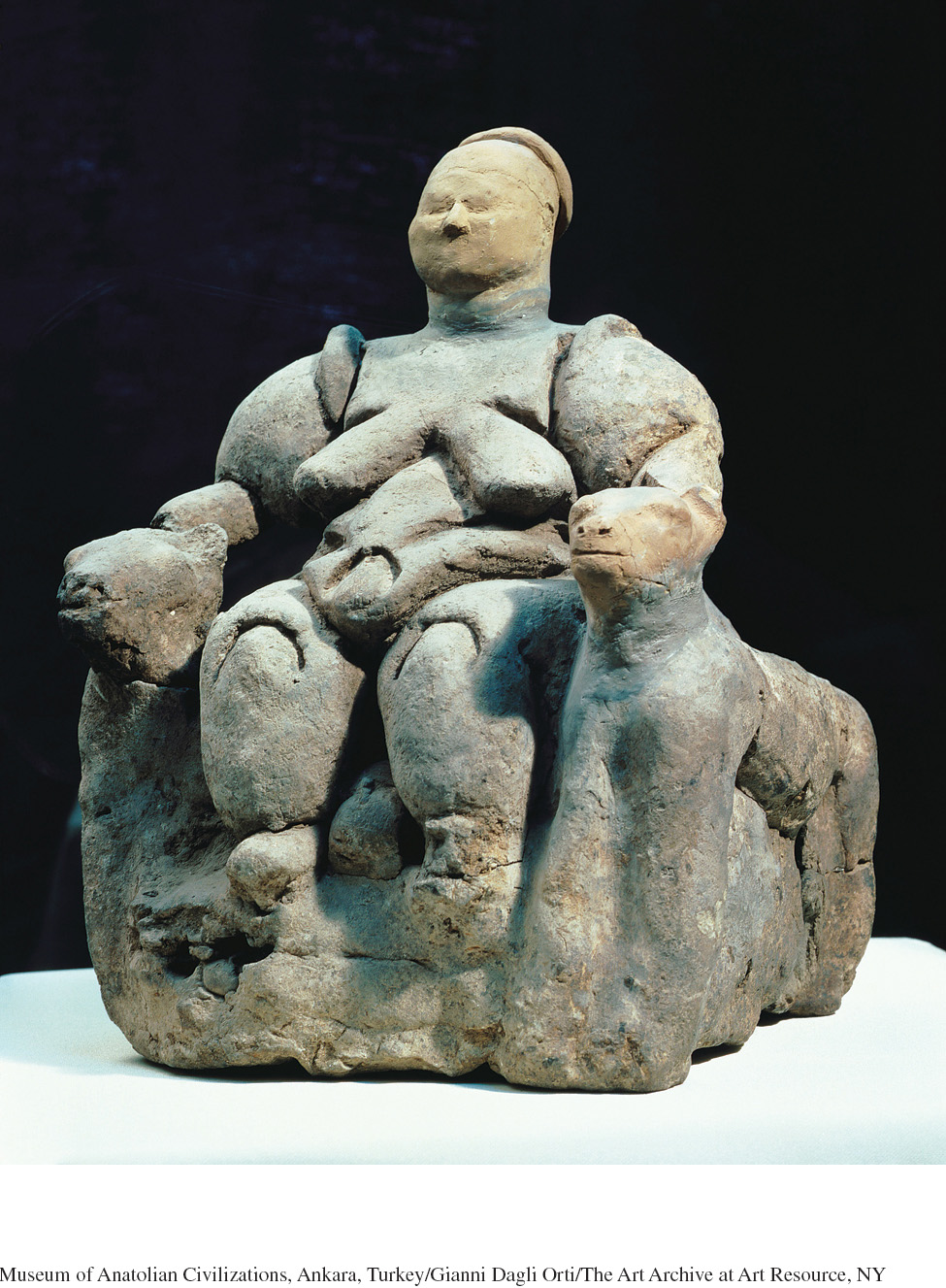Source 1.3: Female Figurine from Çatalhüyük
In seeking to understand the Neolithic age — occurring between the beginnings of settled agriculture and the rise of literate civilizations — historians confront much the same problem as do scholars of the preceding Paleolithic era. In the absence of writing, they must depend heavily on material remains such as art, artifacts, and architecture. In comparison with Paleolithic society, which gave rise to relatively simple art, the new economy generated by agriculture gave rise to many artistic innovations. Weaving and pottery making became major industries, offering new opportunities for creative expression. While animals continued to be a focus of Neolithic art, human figures became more prominent and were more realistically depicted than in the cave paintings and Venus figurines of the Paleolithic era. But observers — both expert and amateur — continue to debate the meaning of these representations with no consensus in sight.
Among Neolithic sites, few have generated more controversy than Çatalhüyük in modern Turkey, particularly about the role of women in the religious and social life of this early agricultural village. The first major dig at the site, undertaken by James Mellaart in the 1960s, uncovered a number of small female figurines, the most famous of which is shown here as Source 1.3. It dates to about 5000 B.C.E. and is some eight inches in height. The baked-
Later archeological research, ongoing since 1993 under the leadership of Ian Hodder, has called some aspects of this “mother Goddess” interpretation into question. Hodder, for example, doubts the existence of an organized cult with an attached priesthood, as Mellaart theorized. Rather, Hodder noted that the image suggests “a close connection between ritual and daily functions.” He added:
I do not think that there was a separate religious elite. I think the religion was an integral part of daily life. It may be wrong to think of the Çatal art as religious or symbolic at all. It may be more that people thought that they had to paint, or make relief sculptures, in order to achieve certain practical ends (such as make the crops grow, or prevent children from dying).2
Furthermore, Hodder suggested that while women were certainly prominent in the symbolism of the village, there is little evidence for a “matriarchal society” in which women dominated. Rather, he wrote that “men and women had the same social status. There was a balance of power.”3
Questions to consider as you examine the source:
- Without trying to interpret this statue, how would you simply describe it?
- What features of this statue might support Mellaart’s view? Which support Hodder’s interpretation?
Female Figurine from Çatalhüyük

Notes
- Ian Hodder, “Discussions with the Goddess Community,” Çatalhöyük: Excavations of a Neolithic Anatolian Höyük, accessed May 14, 2015, http://www.catalhoyuk.com/library/goddess.html.
- Quoted in Jack Linthicum, “A Journey to 9,000 Years Ago,” tech-
archive.net, January 17, 2008, http://sci.tech- archive.net/Archive/sci.archaeology/2008- 01/msg00519.html.